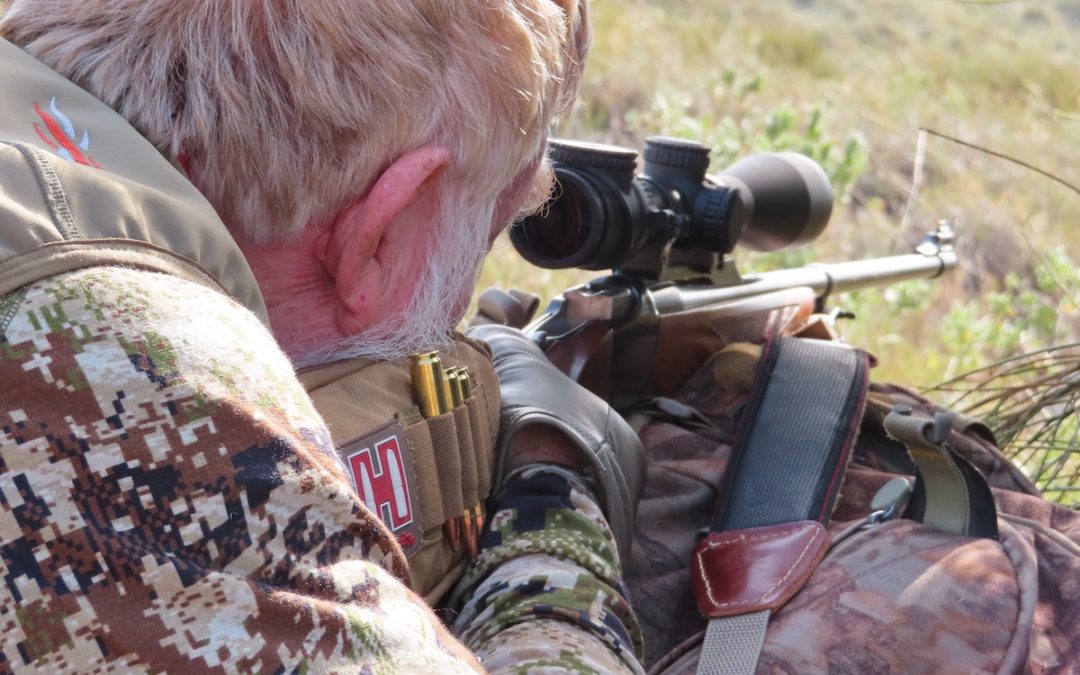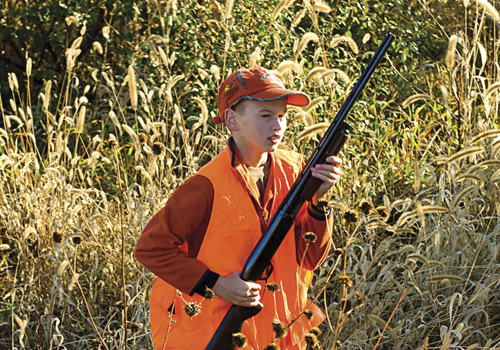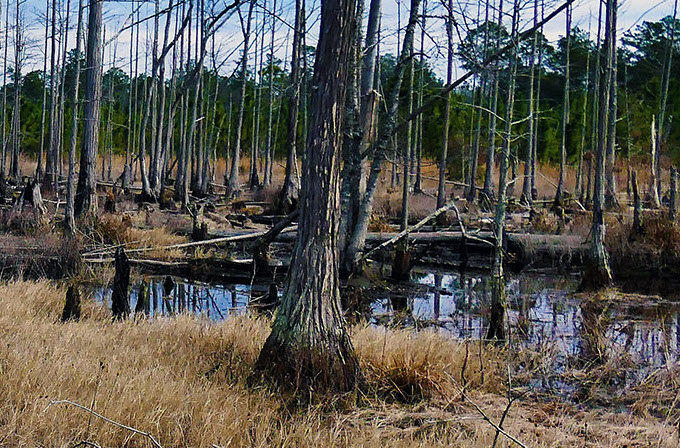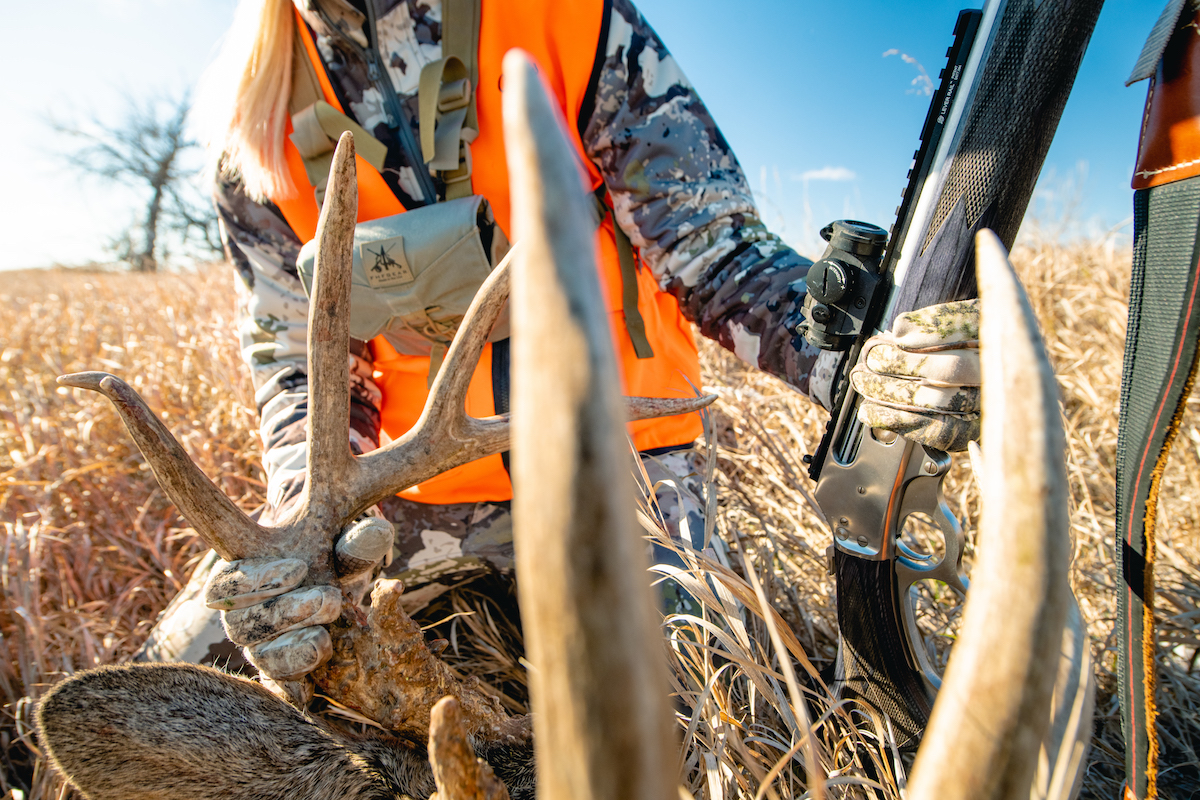Long range hunting accuracy means the maximum distance at which you can consistently place bullets within a 6-inch circle. Here’s why.
Long range hunting has certainly become vogue in the past few years. Frankly, I have mixed feelings. To me, there is hunting and then just shooting. For me personally, hunting is about getting as close as possible, pitting my wits against that of a mature animal that, frankly, has all the advantage. It is not spotting an animal at extremely long range, getting into shooting position and taking a shot. I know there are those who will disagree with me. But those are simply my personal feelings.
Do not get me wrong, I enjoy shooting at long ranges with both my Ruger rifles and handguns. I have spent a fair amount of time shooting long ranges, out to 1,600 yards on Texas’ FTW Ranch with my Ruger rifles and out to 400 yards with my Ruger hunting revolvers. It is on the FTW Ranch where they teach their Sportsman All-Weather All-Terrain Marksmanship. Those who teach the S.A.A.M. courses are mostly former Navy Seal and other military elite sniper instructors. Interestingly, their thoughts about long range hunting are not what one might expect, “We teach long range shooting, not long range hunting! We teach our ‘students’ how to shoot long range so when they stalk to within 200 yards or less, they can make a killing first shot!”
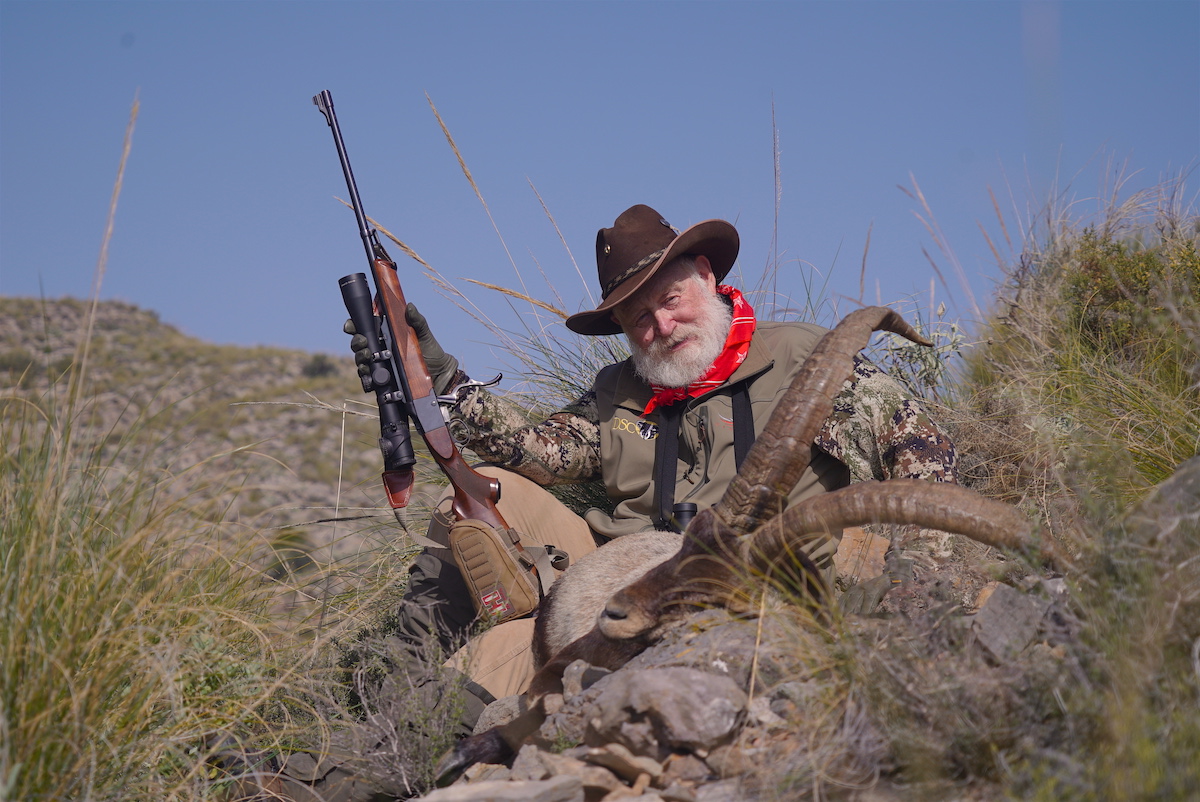
Know your firearms’ down range accuracy and your abilities with it.
Risks of Long Range Hunting
Something to consider is that at a distance of 1,000 yards it takes about two seconds between the time the bullet leaves the muzzle until it strikes the target. Animals during that time can take one or two steps. A bullet that was destined to strike the shoulder or immediately behind the shoulder of an animal can in fact impact the body way behind the shoulder resulting in a gut-shot or hindquarter-shot. Too, by the time a bullet strikes an animal at extremely long range, the down-range energy could possibly only result in wounding, rather than killing, depending, of course, on the caliber, cartridge, bullet style and load.
If a long-range hunter shoots an animal at extremely long range, even if drops in its tracks, if he or she does not have someone to direct him or her to where the animal lays, it might not be recovered. Terrain looks a whole lot different once you start toward a downed animal. Many do not practice enough to truly become proficient at properly hitting long-range game targets. Someone may have all the proper equipment for long-range shooting/hunting, but it still comes down to who is pulling the trigger. Just some thoughts to consider.
Technology in terms of firearms, bullets, loads and optics these days allow shooting at steel and paper at 1,000 yards and well beyond. I admit it is great fun!
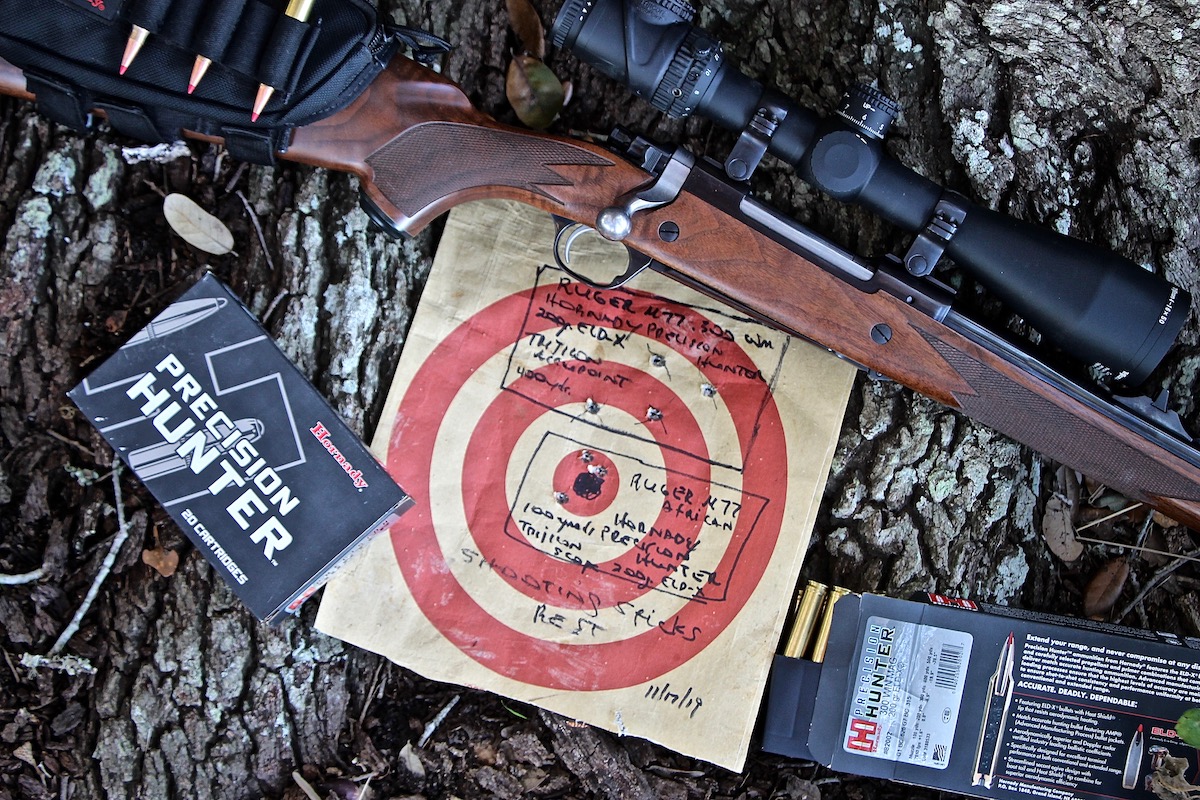
To have good down range “hunting accuracy” the firearm needs to be accurate for starters at 100 yards.
I have long been a proponent of shooting a lot, not just from rock-solid bench situations but from simulated real-world field situations and positions as well. I think it paramount, regardless of whether you shoot pistol, bow, crossbow, muzzleloader, shotgun slugs or rifles to learn your equipment’s capabilities and your capabilities with that equipment.
Long Range Hunting Accuracy
Most game animals have a core vital area, meaning broadside heart and lungs, that measures about eight inches diameter, with elk being a bit larger. A shot placed in those vitals should put an animal down quickly and humanely.
To me essentially “hunter accuracy” is that distance at which you can keep any and all shots within a group somewhat smaller than an animal’s vitals. Most of the time accuracy is measured in minutes of angle, MOA, which basically is 1-inch at 100 yards.
If your firearm, from the bench with a solid rest, can place three shots within a 2-inch group at 100 yards, that, more or less, means you should be able to keep your groups within 6 inches at 300 yards. With such accuracy, you might want to limit your shots to within 300 yards or less to insure you can make a killing shot in the animal’s vitals.
I learned a long time ago there are a lot of sub one-inch grouping guns at 100 yards found in words rather than in actuality. Sub-MOA guns certainly do exist, and thankfully several of my personal Ruger bolt-action and single-shot rifles fall into that category using various Hornady ammo.
With my Ruger/Hornady combinations, topped with Trijicon AccuPoint scopes, I can shoot 3- or 5-shot groups at 100 yards that are smaller than one inch, and do so from real-world hunting situations and positions using tripod style shooting sticks, prone, or using natural rests. That means I should be able to place my shots at 400 yards within a 4-inch circle. At 500 yards I should be able to place my bullets within a 5-inch circle, and at 600 yards in a 6-inch circle. So basically were I so inclined, I should be able to put my shots within the vitals of deer, antelope or elk out to at least 600 yards.
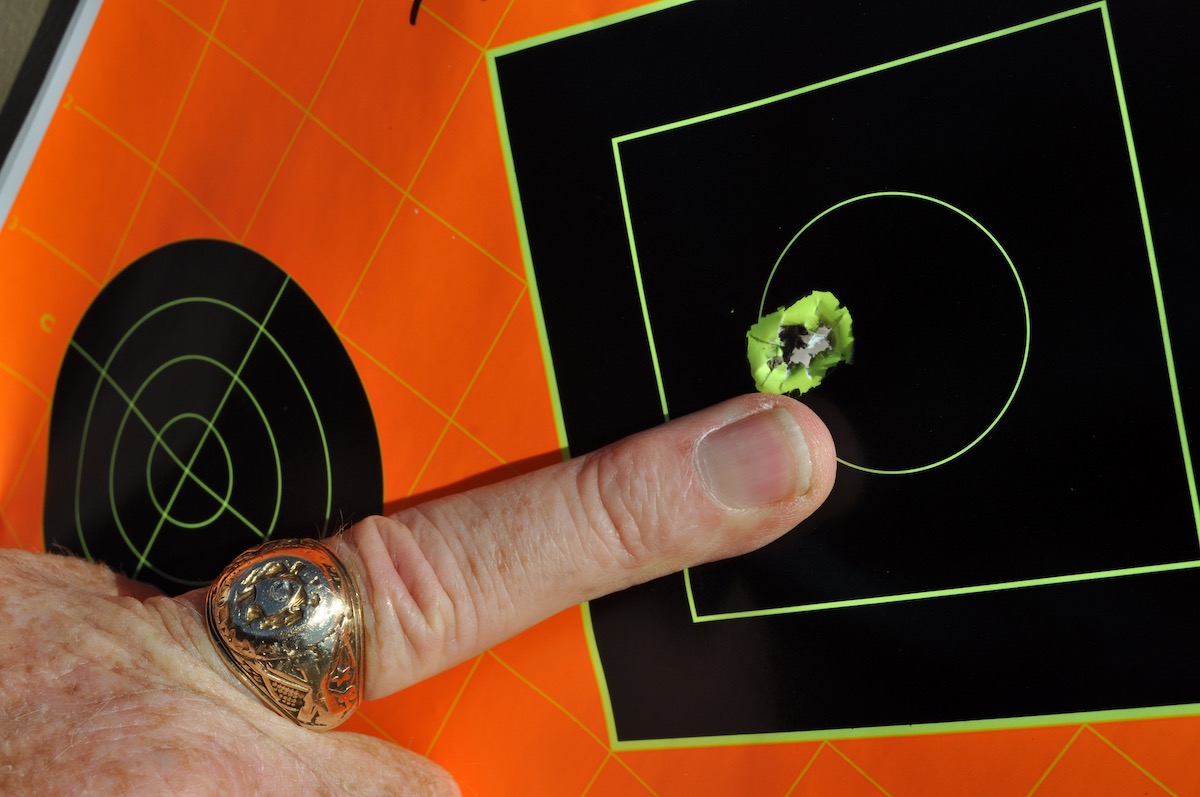
For some “hunting accuracy” means essentially same hole accuracy at 100 yards
Preparing for Your Long Range Hunt
In preparation to an Alberta, Canada whitetail hunt with Ron Nemetchek’s North River Outfitters, I spent time on my home range shooting out to 400 yards, which is the maximum distance I will take a shot at a big northern whitetail to insure precise bullet placement pushed by more than sufficient down range energy for full penetration to quickly kill a deer.
Using the combination of my Ruger M77 African, .300 Win. Mag. topped with a 4-16X Trijicon AccuPoint scope and shooting Hornady’s Precision Hunter 200-grain ELD-X with my rifle rested on crossed shooting sticks in a sitting position, at 100 yards I can place three shots within a 1-inch group. Before leaving, I’ll return to my range and sight-in so my bullets strike 1 1/2 inches high at 100 yards. At 400 yards, using hold-over rather than dialing up my scope (I practice this way because there may not be time to dial up the scope’s reticle when I spot a monster whitetail), I can place four quick shots into a 4-inch circle at 400 yards.
I spent time at my range shooting at targets at 100, 200, 300, and 400 yards using the same dead-on hold. I did so to learn where my bullet impacted at those respective ranges and determine the bullet “drop” out to 400 yards. The way I will have things sighted in when I leave for Alberta, the bullet will drop about 19 inches at 400 yards. Out to 300 yards, this same sight-in will drop about 9 inches, so I really will not have to worry about holding over out to that distance.
I realize there are many excellent ballistic programs from which I could have learned this without doing the actual shooting, but in shooting I became very familiar with my rifle, including trigger pull.
If you do hold over your target, remember hold-over does not mean holding over the top of the target or animal, but holding over the number of inches the bullet will drop at that distance, to impact where you want the bullet to strike.
Final Thoughts
If someone decides to shoot an animal at long range—and “long range” can mean different things to different people; to me that really means anything beyond 300 yards—spend time on the range learning your firearm’s capabilities and yours with it. Remember, too, that whatever group size you shoot at 100, multiply that group size by the distance, meaning 200 is times 2, 300 yards is times 3, 400 is times 4 to get an idea of long-range group size. Getting a 2-inch group at 100 yards calculates out to an 8-inch circle at 400 yards, and doing so from a position you would shoot from while hunting, rather than sitting at a bench with a solid hold.
To reiterate, to me “hunting accuracy” means the distance at which you can consistently place bullets within a 6-inch circle, even though most game animals have a larger vital area, from a real world hunting shooting position.
Why six rather than eight or more inches? Because if one does his or her part, putting a bullet into a six inch circle in the vitals of an animal will indeed kill it quickly and humanely!
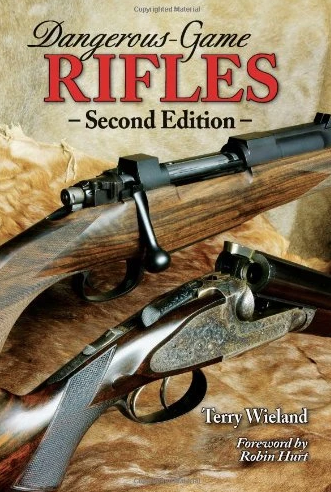 The big-bore rifle for hunting dangerous animals is the most romantic of firearms. Names like Holland & Holland and Mauser, and cartridges like the .470 Nitro Express and .505 Gibbs, have dominated African hunting literature for a century.
The big-bore rifle for hunting dangerous animals is the most romantic of firearms. Names like Holland & Holland and Mauser, and cartridges like the .470 Nitro Express and .505 Gibbs, have dominated African hunting literature for a century.
In this book, firearms expert Terry Wieland explores the history of big-bore rifles for dangerous game, covers rifles and ammunition available today, examines controversies about killing power, and explains the nuances of big rifles and how to use them.
This revised and expanded second edition includes additional chapters on the making of big rifles, practice and usage, updated information on available rifles and ammunitions and more than 100 new photographs, many in color. Shop Now

